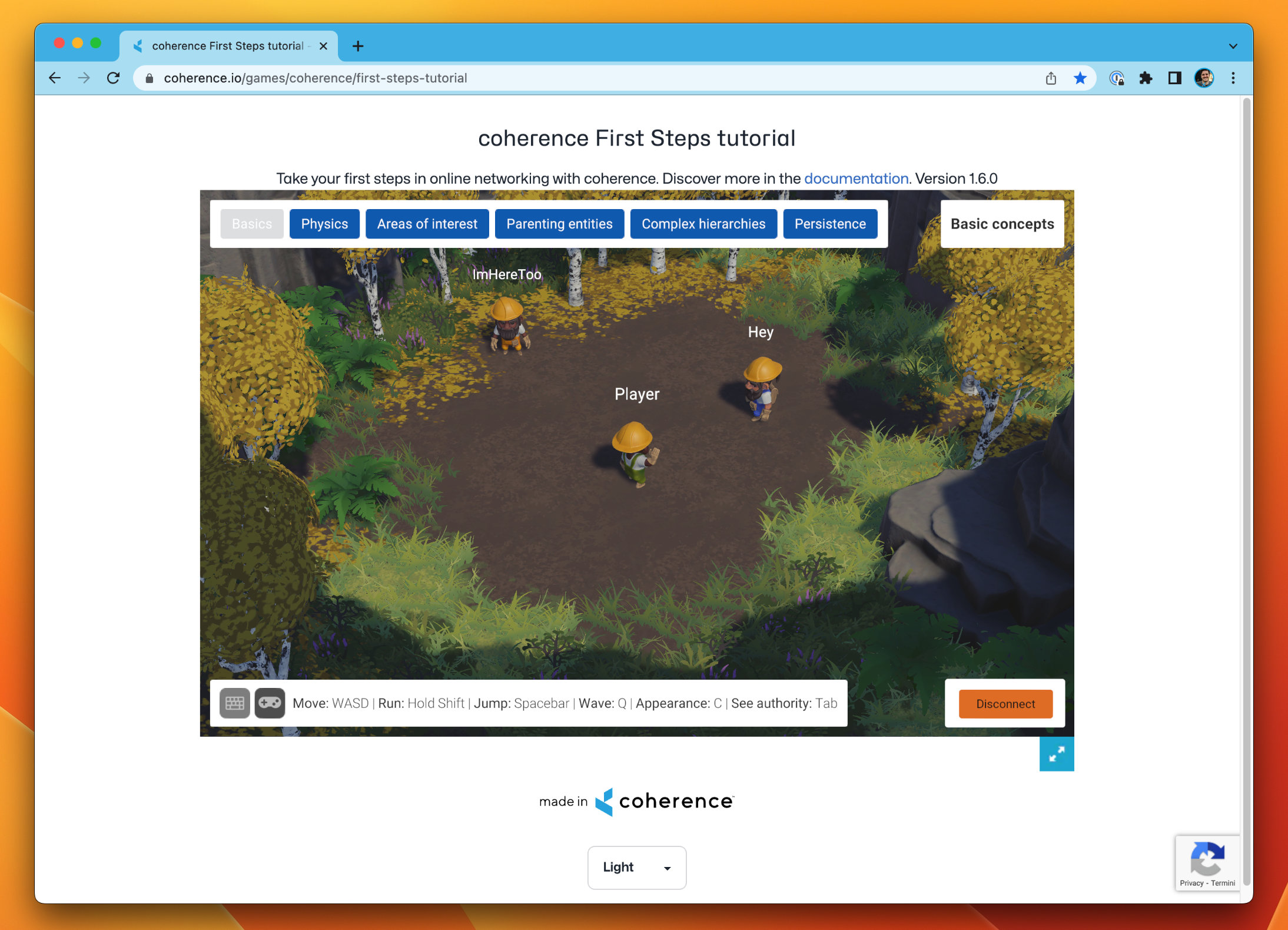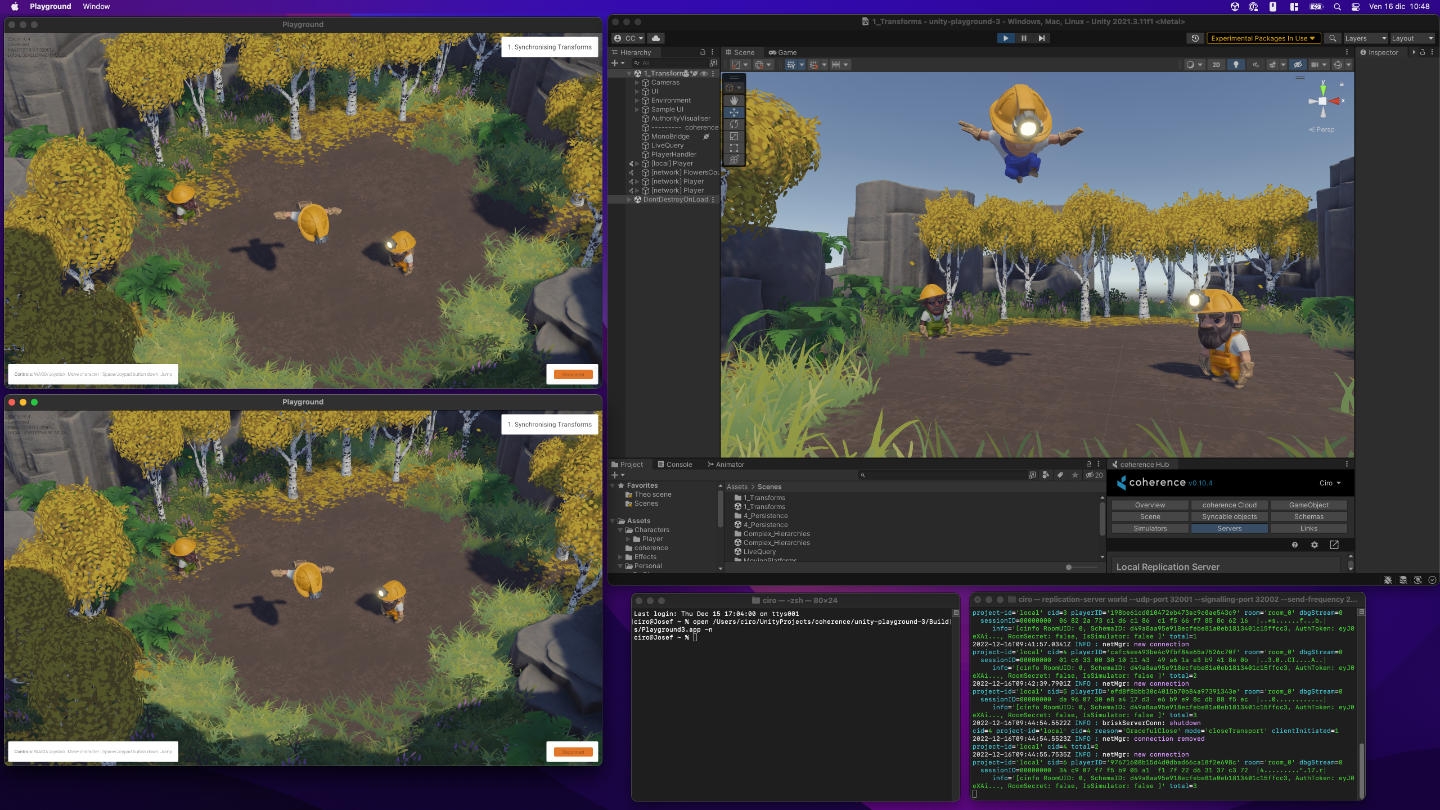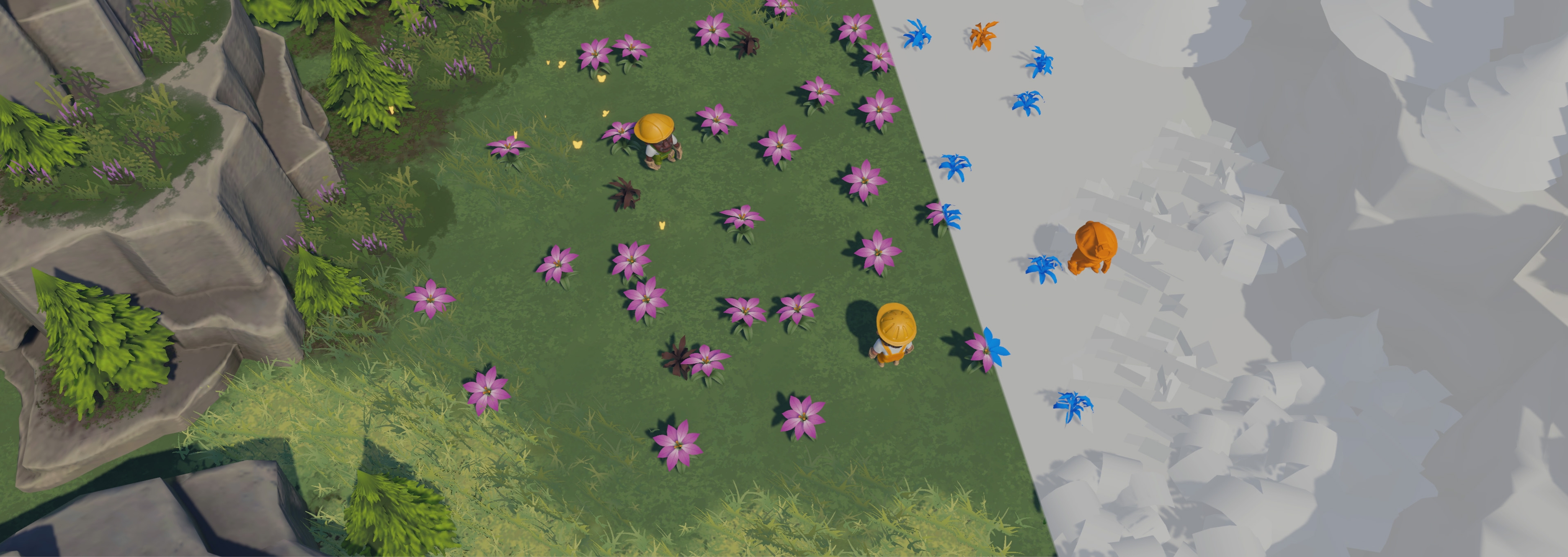First Steps tutorial
The basics of coherence
The First Steps project contains a series of small sample scenes, each one demonstrating one or more features of coherence.
Scenes
If you're a first time user, we suggest to go through the scenes in the established order. They will guide you through some key coherence and networking concepts:
Remember that playing the scenes on your own only shows part of the picture. To fully experience the networked aspects, you have to play in one or more built instances alongside the Unity Editor, and even better - with other people.
Download the Unity project
The Unity project can be downloaded from its Github repo. The Releases page contains pre-packaged .zip files.
Try a pre-made build
To quickly try a pre-built version of the game, head to this link and either play the WebGL build directly in the browser, or download one of the available desktop versions.

Share the link with friends and colleagues, and have them join you!
Make your own build
Once you open the project in the Unity Editor, you can build scenes via File > Build Settings, as per usual.

If you want to try all the scenes in one go, keep them all in the build and place SceneSelector as the first one in the list.
If you're working on an individual scene instead, bring that one to the top and deselect the others. The build will be faster.

You can try running multiple Clients rather than just two, and see how replication works for each of them. You can also have one Client just be the Unity Editor. This allows you to inspect GameObjects while the game runs.
Since you might be building frequently, we recommend making native builds (macOS or Windows) as they are created much faster than WebGL.
You can also upload a build to the cloud and share a link with friends. To do that, follow these steps or watch this quick video to learn how to host builds on the coherence Cloud.
Was this helpful?


